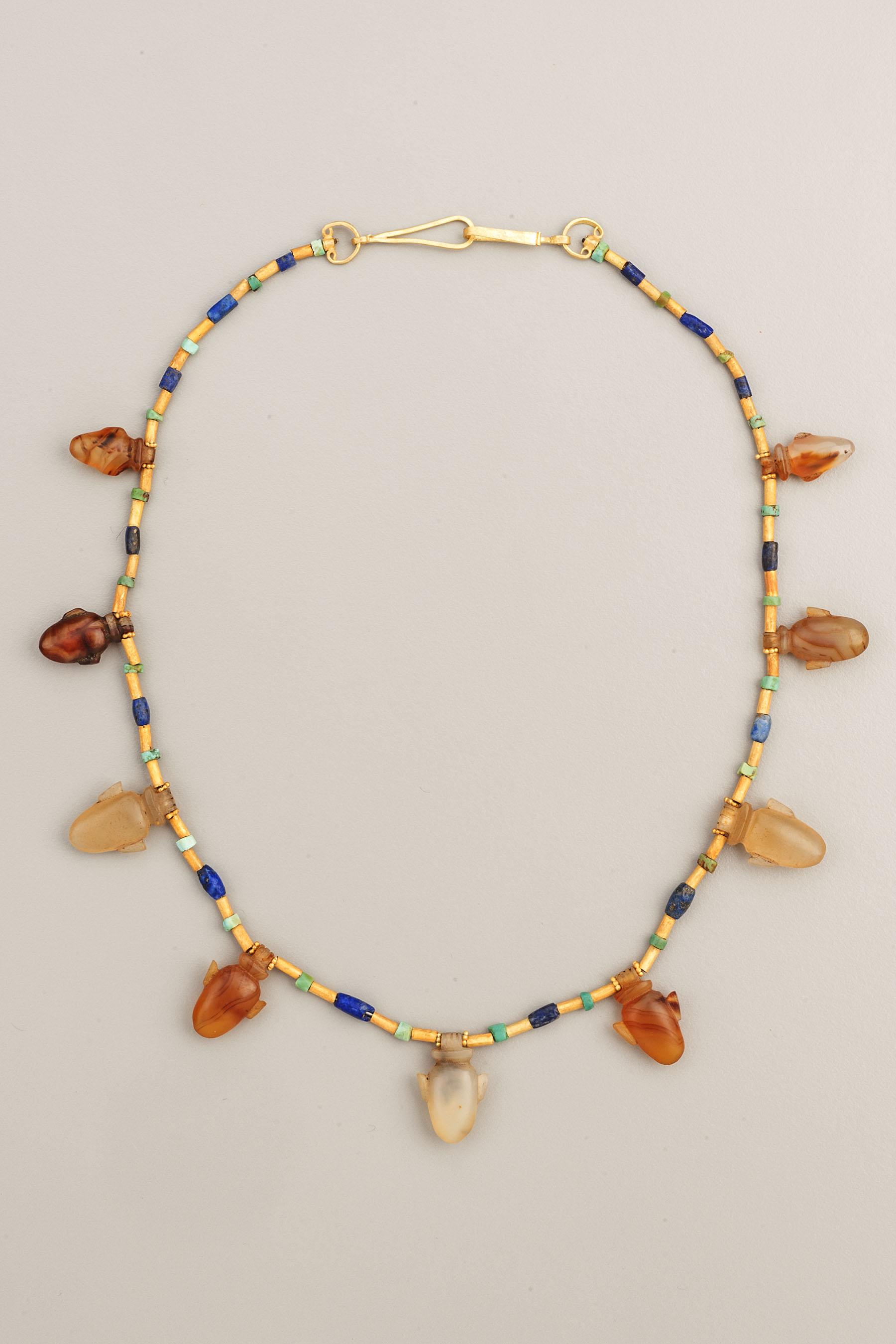Egyptian Chalcedony and Carnelian Pendants with Ancient Turquoise and Lapis Beads and Gold
Collection:
Egypt
Material:
Chalcedony, Carnelian, Lapis Lazuli, Quartz, Turquoise, 20k gold
Size:
The necklace is 17 3/8 inches (44.2 cm) in length. The necklace weighs 21.3 gm.
Price:
$5,000.00
A necklace of 20k gold beads, turquoise and lapis lazuli beads with nine “heart” amulets, most of which are grayish translucent quartz with varying amounts orange carnelian banding and three of which lack any orange color. The largest of these is 2 cm in height, 1.3 cm in width at the widest point, and 6 mm in thickness. The drill hole diameter is 2mm. The smallest amulet is 1.75 cm in height, 9.5mm in width, and 5.5mm in thickness. The drill hole diameter is 1.7mm. Between each of the amulets are strung a lapis lazuli barrel bead and two two shorter turquoise beads, each of these separated by 20k gold tube beads. Each of the heart amulets are faced with two 20k gold granulated ring beads. The fourteen lapis lazuli beads are barrel shaped from 7mm in length to 4mm. The larger beads are 3.4 mm in width, the smallest are 3mm. The drill hole diameters are 1.5mm. The twenty-four turquoise beads are 1.5mm to 2mm in length and 3mm in width. The drill diameters are 1mm. There are forty-six 20k gold tubes, 5mm in length and 2.25mm in width. They have been chemically treated to have a matte patina. There are eighteen six-ball gold granulated ring beads. They are 3mm in diameter. The 20k gold beading tips and hook and eye clasp have also been patina-ed. The ancient Egyptians believed that the soul resided in the heart while we tend to think that the head is the seat of our being. However we still use figures of speech such as “heartfelt” to indicate strong emotion and the symbol of love is the heart. Perhaps we still think in some way that the heart is the seat of emotion even if the scientific view is that the brain is the thinking organ. In any case, amulets to protect the heart were essentially protecting the soul of the persons wearing them. Beads and amulets may be worn for various reasons, but in ancient Egypt the fundamental and most compelling purpose of jewelry was to protect from inimical powers. The colors of the stones themselves were protective as they came from the earth and preserved within themselves the color of life-blood being represented by carnelian and red jasper. The deep blue of lapis lazuli represented water which was particularly important in an arid and desert environment and the light blue turquoise symbolized the sky and air. Beauty was important but it was in no way separate from the function of protection. Among such magical substances must also be included gold. Easily worked and never loosing its luster, it contains within itself all the fiery light and glory of the sun, the energy upon which all life on earth depends.
